







Omani Miscellany
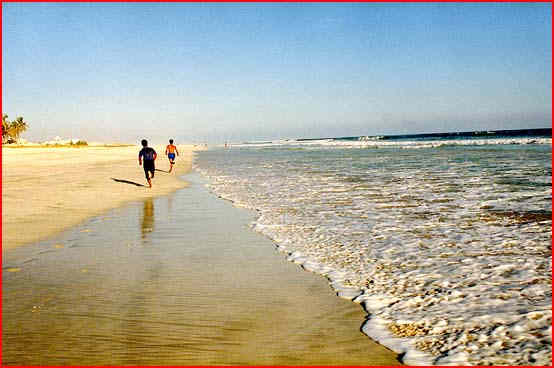
The Beach in Salalah
Salalah, the capital of the southern province of Dhofar bordering
Yemen, is some 1,000 km away from the Capital Area. The beaches
in the area must be seen to be believed. Mostly coral sand, they are
soft, and sparkling white at mid-day. This shot was taken not far from
the Salalah Holiday Inn around dusk.
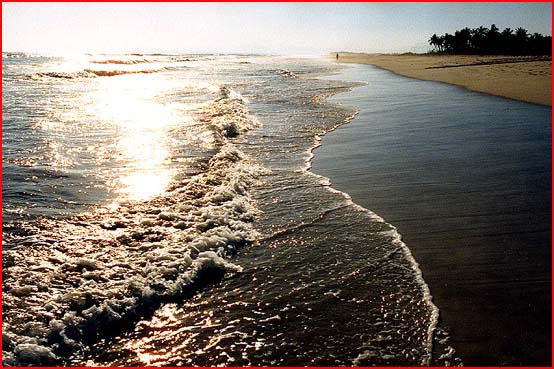
Salalah Beach Scene
This is another shot of one of Salalah's virtually deserted beaches.
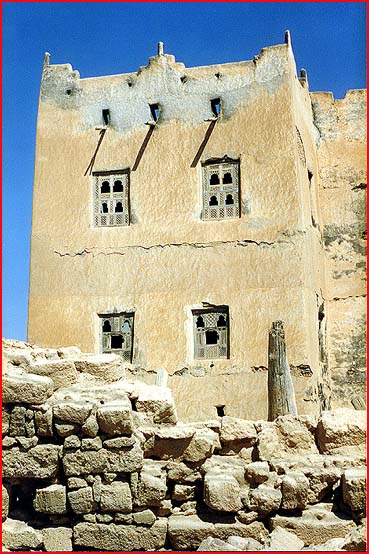
Old House in Mirbat
This old house is in Mirbat, a small fishing village a few kilo-
meters up the coast from Salalah. These houses are built
of a combination of mud brick and date-palm wood. The windows
are carved from the datewood as well.
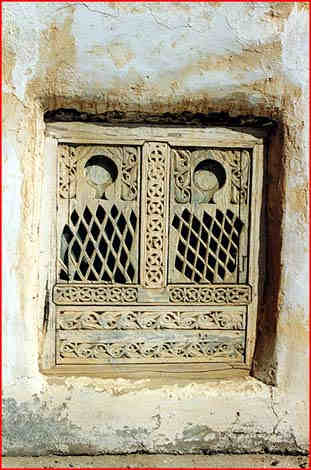
Mirbat House Window Detail
Traditionally, carved palmwood
shutters were used as
windows before plate glass became widely available.
These date from the early years of the century.
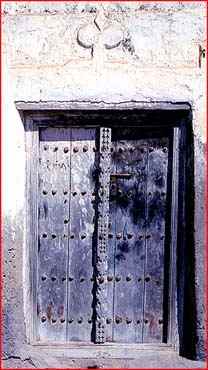
Mirbat: A Wooden Doorway
Many doorways in S. Oman are decorated with
rough plaster friezes above the door. These are usually
symbols of good luck or have a specific meaning
for the family living within.
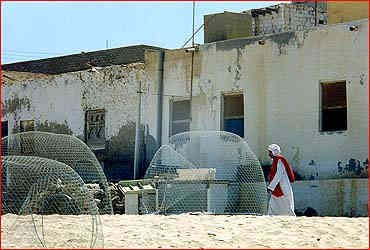
Fish Nets in Salalah
These nets were drying along the beach in Salalah
as I walked by. More of a trap than a net, they
are used along much of the Omani coast.
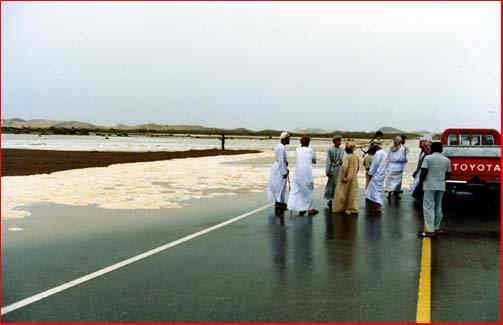
Flooded Wadi
A number of years ago we were caught out on way to the
coast and could go no further than this wadi, which had
flooded. At this point it was at least 100 meters wide. Oman
is not always bone dry despite what many think.
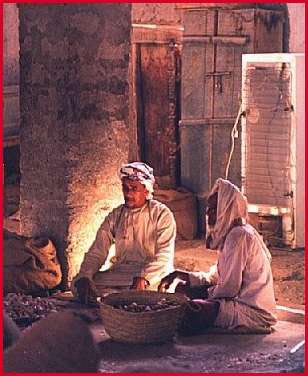
Onion Sellers in the Rustaq Suq
These men were selling onions and garlic
in the old suq (market) of Rustaq
.
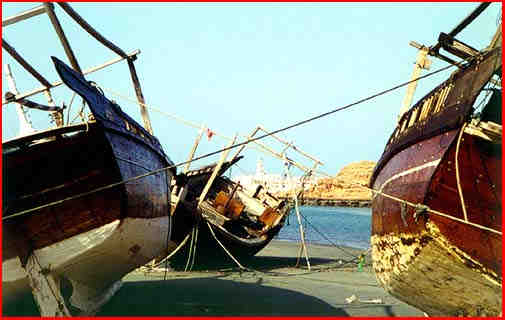
Sur Dhow Harbor
The ancient Omani city of Sur is the site one of the few dhow
ship-building yards left in the Gulf. Ships are both built and repaired here.
These ships are constructed of teak imported from India. Very few
nails are used. Wooden pegs hold the planks together for the most
part. The bottoms of the hulls are coated with a mixture of sheep's
fat, lime, and other natural ingredients to protect the ships from the
ravages of sea-borne wood-borers
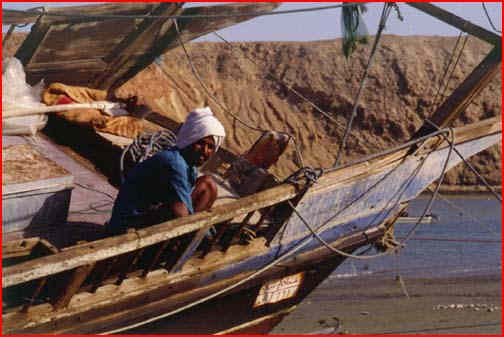
Indian Dhow Carpenter
This man was busily repairing one of the many dhows which
frequent the harbor at Sur, the next main city southwest of
Muscat. Like most laborers in the Sultanate, he comes from
the Indian Subcontinent, most likely from the Indian state of
Kerala or Karnataka. Interestingly, both the wood and the builders
come from the same region.
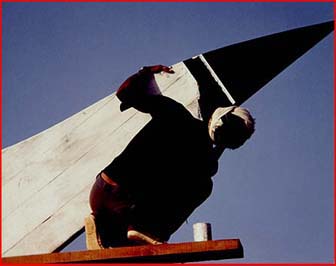
Dhow Craftsman
This man man was putting the finishing touches on the prow of a ship
in Sur's Dhow Harbor Basin.
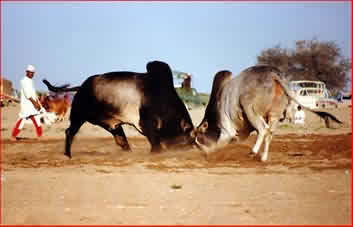
Omani Bullfight
In Oman, the bulls do the fighting and none is killed. Two bulls are
brought to the center, a rope tied to one rear leg, and the bulls are goaded to butt heads. The first animal to
go down on its knees, loses. Barka, a little coastal town to the NW of the Capital Area where this shot was taken,
is a major center of the sport.
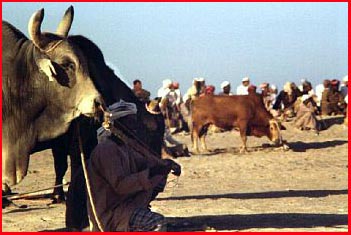
Omani Bullfighters
This old man is watching and waiting until his animal
goes into the fray.
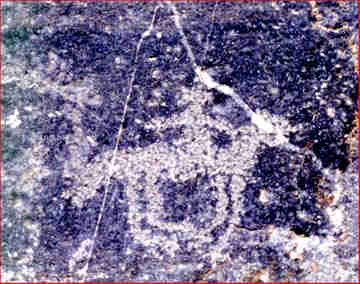
Rock Carving
This primitive carving of a man on a camel is on
the side of a boulder near the entrance to Wadi Beni Kharous
not far from Rustaq, which is on the northern slopes of the
Jebel Akhdar.
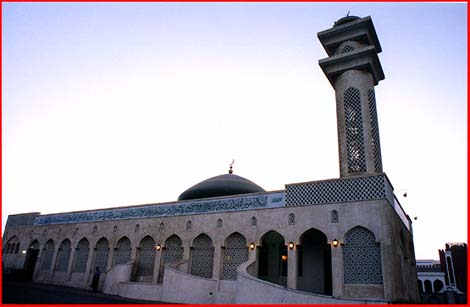
Beach Mosque in Seeb
This mosque with its graceful entrance ramp is quite new and sits
serenely along the beach road in Seeb not far from the busy fish
market and a pleasant beach-side park.
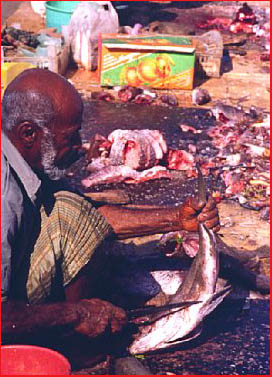
The Seeb Fish Suq
As in most coastal towns, Seeb has a fish market
down by the beach where you can buy part of the day's
catch as it comes off the boats. For a few baiza extra
you can have your fish cleaned and filetted.
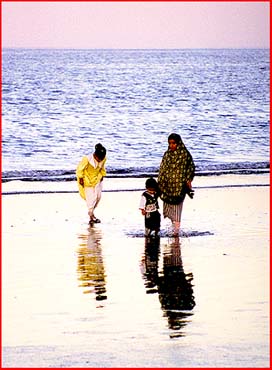
The Beach in Seeb
I caught these kids wading in the water along
the beach in Seeb just as the sun was setting.
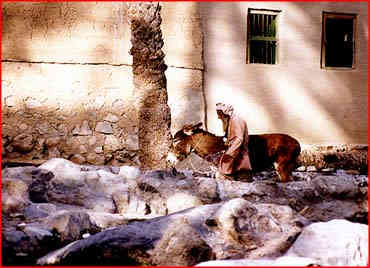
Old Man and his Donkey
This old man and his donkey were plodding slowly
along the wadi in Nakhal, not far from Seeb.
Back to top




















